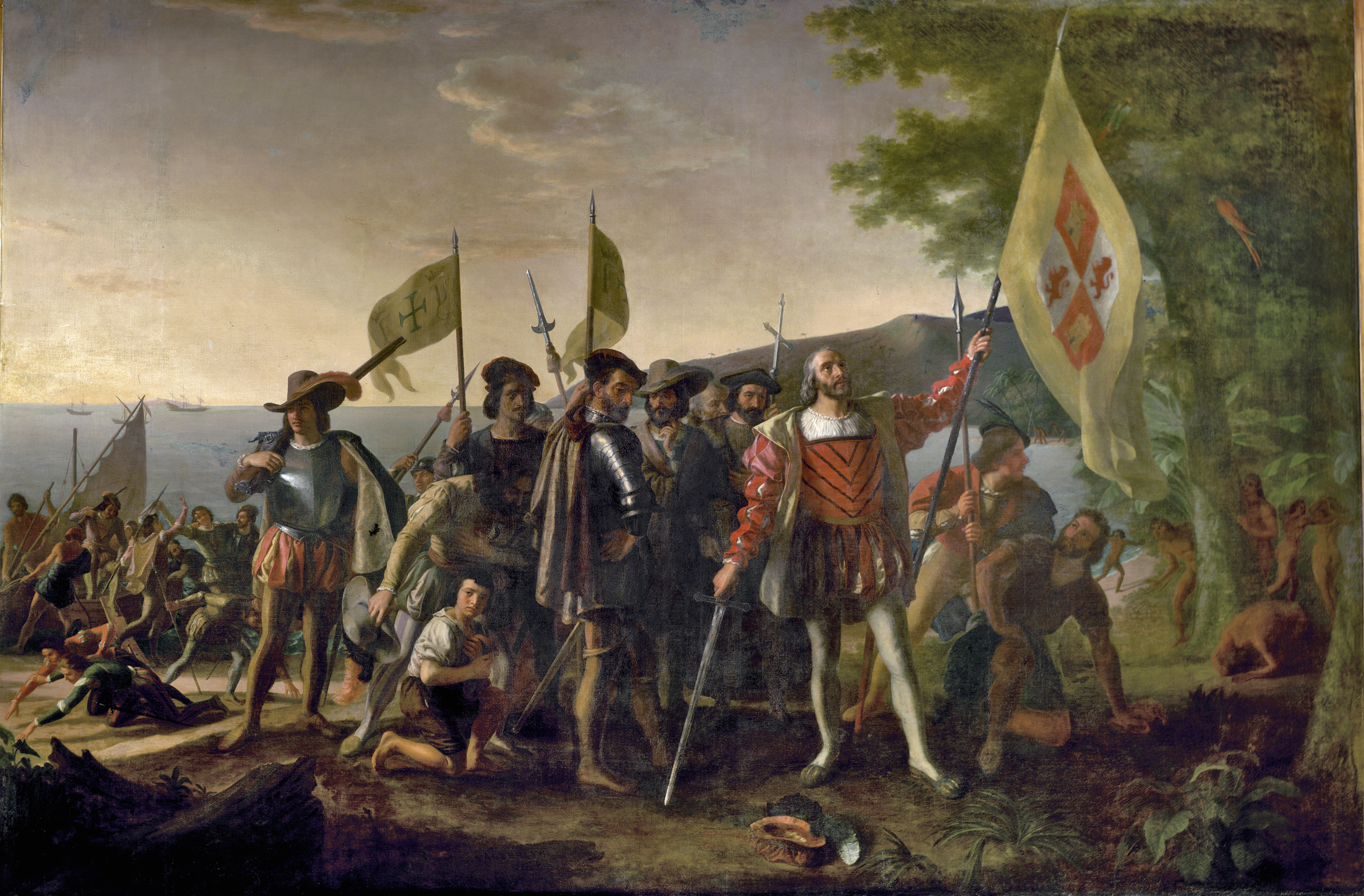On 30 March 2023, the Vatican Dicastery for Culture and Education, and the Dicastery for Promoting Integral Human Development, issued a “Joint Statement” on the “Doctrine of Discovery.” The Vatican stopped short of a revocation of the 4 May 1493 papal bull, issuing instead a “repudiation of the doctrine of discovery.”
On 3 May 2023, “In response to the Papul Bulls issued 530 years ago (3 and 4 May 1493)”, Shawnee/Lenape scholar Steven Newcomb published “Revoke the Papal Bulls – A View-from-the-Shore Analysis of the Vatican’s 30 March 2023 Statement on the Doctrine of Discovery”. The opening establishes the framework of this critique:
The context begins with the free existence of our Native nations and peoples, extending back to the beginning of our time through our oral histories and traditions, contrasted with the system of domination that was carried by ship across the ocean and imposed on everyone and everything. From that starting point we end up with a non-Christian view-from-the-shore with our Ancestors looking out at the invading ships sailing from Western Christendom, and a view-from-the-ship perspective, with the colonizers moving toward our Ancestors with the intention of establishing the Christian empire’s system of domination where it did not yet exist. Below we discuss the recent Vatican Statement on the Doctrine of Discovery with a view-from-the-shore perspective, while realizing that the Vatican officials wrote their statement with a view-from-the-ship (church) perspective.
Steven Newcomb has been researching and decoding the doctrine of Christian Discovery since the 1980s. Together with Birgil Kills Straight, a ceremonial leader of the Oglala Lakota Nation, the Indigenous Law Institute was founded in 1992 to begin a global campaign to revoke the 4 May 1493 papal bull, Inter Caetera, which Pope Alexander VI issued shortly after Columbus returned to Western Christendom from the Bahamas. Concerning the Origins of the Doctrine of Discovery, Newcomb wrote in 1992:
To understand the connection between Christendom’s principle of discovery and the laws of the United States, we need to begin by examining a papal document issued forty years before Columbus’ historic voyage. In 1452, Pope Nicholas V issued to King Alfonso V of Portugal the bull Romanus Pontifex, declaring war against all non-Christians throughout the world, and specifically sanctioning and promoting the conquest, colonization, and exploitation of non-Christian nations and their territories.
Under various theological and legal doctrines formulated during and after the Crusades, non-Christians were considered enemies of the Catholic faith and, as such, less than human. Accordingly, in the bull of 1452, Pope Nicholas directed King Alfonso to “capture, vanquish, and subdue the saracens, pagans, and other enemies of Christ,” to “put them into perpetual slavery,” and “to take all their possessions and property.” [Davenport: 20-26] Acting on this papal privilege, Portugal continued to traffic in African slaves, and expanded its royal dominions by making “discoveries” along the western coast of Africa, claiming those lands as Portuguese territory.
Thus, when Columbus sailed west across the Sea of Darkness in 1492 – with the express understanding that he was authorized to “take possession” of any lands he “discovered” that were “not under the dominion of any Christian rulers” – he and the Spanish sovereigns of Aragon and Castile were following an already well-established tradition of “discovery” and conquest. [Thacher:96] Indeed, after Columbus returned to Europe, Pope Alexander VI issued a papal document, the bull Inter Cetera of May 3, 1493, “granting” to Spain – at the request of Ferdinand and Isabella – the right to conquer the lands which Columbus had already found, as well as any lands which Spain might “discover” in the future.
In the Inter Cetera document, Pope Alexander stated his desire that the “discovered” people be “subjugated and brought to the faith itself.” [Davenport:61] By this means, said the pope, the “Christian Empire” would be propagated. [Thacher:127] When Portugal protested this concession to Spain, Pope Alexander stipulated in a subsequent bull – issued May 4, 1493 – that Spain must not attempt to establish its dominion over lands which had already “come into the possession of any Christian lords.” [Davenport:68] Then, to placate the two rival monarchs, the pope drew a line of demarcation between the two poles, giving Spain rights of conquest and dominion over one side of the globe, and Portugal over the other.
During this quincentennial of Columbus’ journey to the Americas, it is important to recognize that the grim acts of genocide and conquest committed by Columbus and his men against the peaceful Native people of the Caribbean were sanctioned by the abovementioned documents of the Catholic Church. Indeed, these papal documents were frequently used by Christian European conquerors in the Americas to justify an incredibly brutal system of colonization – which dehumanized the indigenous people by regarding their territories as being “inhabited only by brute animals.” [Story:135–6]
The lesson to be learned is that the papal bulls of 1452 and 1493 are but two clear examples of how the “Christian Powers,” or “different States of Christendom,” viewed indigenous peoples as “the lawful spoil and prey of their civilized conquerors.” [Wheaton:219–20] In fact, the Christian “Law of Nations” asserted that Christian nations had a divine right, based on the Bible, to claim absolute title to and ultimate authority over any newly “discovered” Non-Christian inhabitants and their lands. Over the next several centuries, these beliefs gave rise to the Doctrine of Discovery used by Spain, Portugal, England, France, and Holland – all Christian nations.
Fast-forward 31 years to May 2023 and consider Newcomb’s in-depth critical analysis of the Vatican’s 30 March Joint Statement that “repudiates” the “Doctrine of Discovery”. This Joint Statement of the Vatican fails to address humanity’s dire need for these destructive papal bulls to finally be revoked as a beginning to end the domination system they have produced. The Contents of A View-from-the-Shore Analysis provides the historical background of The Empire Domination Model of Christianity and how Christian Discovery is the foundation of the United States:
- The Context
- The Indigenous Law Institute
- Matthew 28:18-20 in the Bible Expresses a Mandate to Baptize All Nations. That, and the Mandate of Genesis 1:28, are Traced to a Number of Papal Bulls Issued During the Fifteenth Century
- Pope Francis’s Environmental Encyclical, Laudato Si
- The Book of Genesis in Laudato Si
- The Collective Punishment and Domination of Women in the Bible
- The Chosen People Promised Land Narrative Used Against Indigenous Nations and Peoples
- The Right of Discovery
- A Hypothetical Scenario
- Some Text from Romanus Pontifex
- More Evidence of the Connection Between Matthew 28:18-20, the Papal Bull Romanus Pontifex, and the Theology of Domination
- Additional Content from the Vatican’s March 30th Statement on the Doctrine of Discovery
- Papal Bulls Invoked in 1680 by the Spanish Crown in the Compilation of the Laws of the Indies
- Conclusion
The Conclusion distills the reach and foundational influence of 15th century papal documents into the 21st century:
Today Indigenous nations and peoples live with the psychological and other forms of wreckage brought about by the fifteenth century Vatican documents issued by various popes. How many nations and peoples are no longer existing as a result of those documents? How many languages, evolved over thousands and thousands of years by the ancestors of original nations and peoples, are no longer existing as result of those destructive documents? How many acres and hectares of land of the original (Indigenous) nations and peoples are now under the claim of a right of domination as a result of those papal bulls? The number of potential questions regarding all the torment and abuse and suffering caused by the legacy of those documents is staggering.
The Vatican March 30, 2023 statement on the Doctrine of Discovery heightens awareness of the roots of the patterns of domination found in the Vatican papal bulls that were adopted into United States law in the 1823 U.S. Supreme Court ruling Johnson and Graham’s Lessee v. McIntosh, two hundred years ago this year. Evidence of those religious domination patterns is found in the distinction made in the Johnson ruling by Chief Justice John Marshall between “Christian people” and “natives, who were heathens,” and in his claim of United States “ultimate dominion” [domination]” over “heathen” Native nations and their lands. The U.S. Supreme Court has made the 15th century claims of a right of domination foundational to U.S. federal anti-Indian law and policy, and the claim of the “plenary power” of Congress over “Indians.” The claim of a right of domination must be abandoned and ended if there is to be any rightful relationship between the descendants of the colonizers and Indigenous nations and peoples today.
The patterns of domination that were unleashed on the planet by means of the Vatican documents have had devastating consequences that have been manifested in, for example, the theft and kidnapping of our children from the their loved ones and families, as well as murdered and missing Indigenous women, the expropriation of our lands and waters, the destruction of our original free existence by robbing us of our liberty and forcing us under a system of domination, the poisoning of our land, water, air, and our bloodstreams with toxic chemicals, the attempt to intentionally kill our languages (i.e., Linguicide), intentionally teaching the abuse of women and children, the destruction and desecration of our Sacred and Significant Places, to name just some of the ways in which the Holy See’s papal bulls of the fifteenth century have destructively impacted and continue to destructively impact our original nations and peoples.
How much land of our original nations does the Vatican currently hold as “property” throughout the Western Hemisphere? Every acre [or hectare] of land in the Western hemisphere that is in the possession of the Vatican and the Catholic Church is a result of the papal decrees of the fifteenth century that we are talking about here. If the Vatican is sincere, let’s talk about its land holdings, how they got hold of all that land of Indigenous nations and peoples, and how they are going to abandon their claim of a right of domination over those areas.
We at the ILI, in solidarity with Original Nations and Peoples, will continue to call upon the Holy See to not simply “renounce” the “doctrine” inherent in the papal bulls, but to abandon the papal bulls themselves by revoking them. We do this as part of our effort to publicize and challenge the patterns of domination globally and to challenge the patterns of domination expressed in the Johnson v. McIntosh ruling and in other legal decisions that are based on Johnson into the 21st century.
In a 2021 interview, Newcomb summed up how patterns of Christian domination were used by the colonial powers of Europe to justify claiming title to the lands of Africa and the Western Hemisphere as well as sovereignty over all Original Free and Independent Peoples living in those lands and throughout the globe since time immemorial.
When I think about the Vatican papal bulls, the papal documents that were issued by various Popes in the 15th century, and I think about the language that I examined in those documents and the patterns that are revealed by that language, it reminds me of claims of a right of domination in all kinds of eras across history, throughout history, throughout time. What I mean by that is if we go back and think about the language in the 1452 papal document Dum Diversas as a starting point, and think about the pattern of thought and behavior that’s revealed in the language that states: “invade, capture, vanquish, and subdue”, “reduce [their persons] to perpetual slavery” and “take away all their possessions and property”, [there is] this idea that they have the right to convert the land. In other words, to take the lands of Original Nations and Peoples, or what most folks know as Indigenous Nations and Peoples and all of the lands and territories, and take those from them and convert them into the property of those claiming a right to come in on top of them.
So if we dispense what the word Christian—Christian is a cover word—but it’s very clear that that is part of what was understood as the Christian Empire back then, at least that’s what they termed it. The [Inter Caetera] papal bull of May 4th, 1493, issued by Pope Alexander VI after Columbus made his voyage to the Caribbean or Bahamas and back to Europe, that particular document refers to the Christian Empire, Christiani imperii. When we think about these patterns of domination, empire, invade, capture, vanquish, subdue, as I already said, and look at how those kinds of patterns play out today and the behavior of the state governments of the world and the state systems of the planet, there is always at the base or foundation of every state system that I know of the claim that everyone and everything within the boundaries of the state territory is subject to that claimed authority on the part of the state.
Tour Group in the Capitol Rotunda, Washington, D.C., June 2021
Landing of Columbus, John Vanderlyn (1775-1852)Christopher Columbus is depicted landing in the West Indies, on an island that the natives called Guanahani and he named San Salvador, on October 12, 1492. He raises the royal banner, claiming the land for his Spanish patrons, and stands bareheaded, with his hat at his feet, in honor of the sacredness of the event. The captains of the Niña and Pinta follow, carrying the banner of Ferdinand and Isabella. The crew displays a range of emotions, some searching for gold in the sand. Natives watch from behind a tree.
John Vanderlyn (1775-1852) had studied with Gilbert Stuart and was the first American painter to be trained in Paris, where he worked on this canvas for ten years with the help of assistants.The difference for Original Nations and Peoples, those of our nations and peoples that were existing here prior to the invasion by Western Christendom of this continent and this hemisphere and other parts of the world, is that our ancestors were living a free and independent existence and had been living that kind of an existence for thousands and thousand of years, and had been evolving their languages, cultures, and spiritual traditions over that very lengthy period of time. All kinds of developments and primarily with the idea, based on our origin stories and traditions and teachings, that we were supposed to have a sacred or beneficial relationship with other life forms forever. That’s the kind of contrast to that invade, capture, vanquish, subdue mentality, the contrast between those two orientations toward reality.
The massive Landing of Columbus painting is “One of four scenes of early exploration in the U.S. Capitol Rotunda.” Vanderlyn was commissioned by Congress in June 1836 to paint this work; it was installed in early 1847 where it hangs to this day, celebrating “claiming the land for his Spanish patrons … with his hat at his feet, in honor of the sacredness of the event…. The crew displays a range of emotions, some searching for gold in the sand.” The inclusion of this painting speaks worlds about the true origins of the claimed right of title to the land and sovereignty over Original Free and Independent Peoples who pre-date the creation of the U.S. Constitution from time immemorial.
In a 15 Dec 2021 presentation made On the Doctrine of Christian Domination at the 3rd Annual Oceti Sakowin Titunwan Lakota Oyate Treaty Conference, Newcomb focuses on how language frames the conception and awareness of our shared reality through the power of metaphor. As he states at 4:00, “The words that we use create and maintain the reality that we experience.” He goes on (beginning at 20:53) to explain how the word “government” in Latin is “dominationes”:
“Government” also means “Domination”. This is revealed in one of the vatican papal bulls. There’s a sentence that says, “We trust in Him”—capital H on him “from whom empires and dominations and all good things proceed”. Actually in English, it says, “from whom empires and governments and all good things proceed.” When you go to the Latin and look at the Latin word for governments, its “dominationes” meaning dominations. So I often just use that Latin word instead of the English.
But this is important because the system of domination—if we understand that a state is a system of domination as revealed by Max Weber and many others, then any time that the state or a state is being referred to, a system of domination is being referred to, and so it’s the domination called South Dakota or North Dakota or California or whatever because it’s a state of domination. But they don’t want to call it that. That reveals the true nature of the game so they put another metaphor on there and then they take your own name—they take the Dakota name and even appropriate that. Like in Hawaii, they take the name Hawaii, which belongs to the Kanaka Maoli People, and they steal that and put that on their state of domination and call the state of domination Hawaii.
There are those minds that are highly intelligent that know how to orchestrate all of these meanings and that’s what we’ve been up against all of this time.
Steven Newcomb’s view-from-the-shore perspective is invaluable, providing as it does, the critical understanding of the history and legacy of the domination system that must end if the human project is to successfully evolve into our post-industrial-mind epoch.



